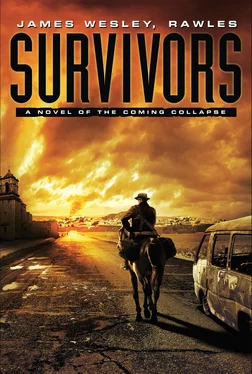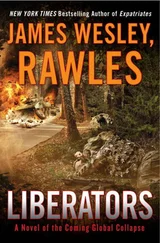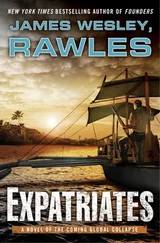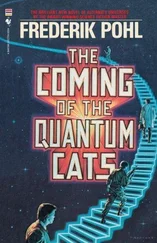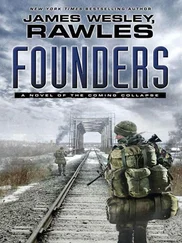Inside the waterproof storage box, the transceiver was so small that there was enough room left over for a small spiral-bound notebook, an external power cord with both car battery clips and a cigarette lighter plug, and several small spools of wire for spare antenna or ground leads. He inserted six batteries into the battery tray and used the radio’s battery voltage monitor to verify that they were good. Andy flipped open his notepad and turned it to a page of notes from when he was explaining radio procedure to Kaylee. He paused to read it again, because Kaylee had annotated it with questions, comments, and her ever-present cartoon doodles. He missed her so much that it hurt. The page read:
Some Common Abbreviations Used in CW (Morse) Transmissions
These are sent as if they were a single character:
AR—End of message. Typically sent on your last transmission, before you send the call signs the final time.
BT—Paragraph break, or just a break in our thoughts.
Kaylee wrote: “How do you say ‘Period’? We rarely use periods (too slow and awkward to send compared to BT) unless we’re relaying literal text where they matter.”
SK—If sent after sending the call signs the final time, it means we are shutting off the radio and not accepting any more calls.
Common abbreviations, sent as words using normal characters:
ABT—About
BK—Break. This means back to you; no need to use call signs.
CPY—Copy
CU—See you (later)
DE—From. This is used between call signs.
ES—And
FB—Fine business. Basically means “That’s great” or “That’s wonderful.”
FER—For. Beneath this, Kaylee wrote: “That is goofy. Why not FOR???” Andy penned: “Laziness. It’s just quicker in Morse to send FER than FOR:
..–… –. (FER)
versus
..–. – – – .–. (FOR)”
HI—Laugh
HR—Here
HW—How
K—Go ahead
KN—Go ahead ONLY the station I am calling or talking to
MNI—Many
NM—Name
OM—Old man. All men are OMs in the ham world. Beside this line Kaylee drew a caricature of an old bearded man tripping on his beard.
PSE—Please
R—I heard everything you said and don’t need you to repeat anything. Kaylee wrote: “So R is the first thing we’ll reply with on each ‘Over’ (or not if we need a repeat), right? RIGHT!”
TNX—Thanks
TU—Thank you
UR—Your or You’re (depending on context)
VY—Very
YL—Young lady. All females are YLs in the ham world. Kaylee annotated this line with a caricature of an old witch wearing headphones, the cable from the headphones was dipped in a cauldron.
73—Best regards. Always used singularly. (Only CB-ers and ex-CB-ers use the plural “73s.”)
88—Hugs and kisses
?—Sent by itself, it means “I’m going to repeat what I just said.” Beneath that, Kaylee had written, in larger block letters: “KL: HI 88 PSE COME HOME SOON FER 88 UR YL 73 AR.”
Common Q-signals sent as words:
QRM—Interference from another station
QRN—Static
QRP—Low-power (less than 5-watt) transmitters
QRZ?—Who is calling me? Or at the end of the contact, sent instead of SK, it means “I’m listening for more calls and would like to receive some.”
QSB—Fading
QSO—A contact (conversation)
QSY—Change frequency
QTH—Location
NOTE: Call signs are always sent in this order: {OtherGuy’sCallSign} DE {YourCallSign}. And below that, Kaylee had drawn a cartoon of an outhouse with an enormous antenna mast on top, captioned: “QTH #1-OM QSO WITH TP”
Andy laughed and closed the notebook. He plugged in the antenna and his headphones. Andy didn’t need to plug in or even carry an old-style hand key, as the KX1 had an internal electronic keyer and a set of keyer paddles that plugged directly into its case for the ultimate in portability and operating ease. The paddles were manipulated via slight movements of the thumb and forefinger (squeezing the paddles), enabling him to send Morse much faster and smoother than he could with a traditional telegrapher’s hand key. The paddles also had the advantage of being virtually silent, versus the familiar clackety-clack of a hand key.
For convenience and to allow him to keep one hand free, he attached the radio to his thigh using a Velcro strap. Andy switched it on and set it to 10.106 MHz-the international 30-meter band QRP calling frequency.
Andy put on the headphones, gave a brief silent prayer, and then whispered, “Okay, Mighty Flea, do yo’ stuff!” Squeezing the KX1’s keyer paddles, Andy remembered to add “DL/” in front of his call sign to indicate that he was transmitting in Germany, and keyed: “CQ CQ CQ DE DL/K5CLA DL/K5CLA K”
He was surprised to hear an immediate answering call, only slightly off frequency, “DL/K5CLA DE PA3ADG PA3ADG K”
As he listened, he quickly adjusted the radio’s incremental tuning for a comfortable medium-pitched tone and wrote PA3ADG on his notepad.
Excitedly, Andy replied: “PA3ADG DE DL/K5CLA FB UR 589 589 NM IS ANDY BT”
Then he quickly added: “I AM EX US ARMY OFFICER BIKING THROUGH DK ES F TRYING TO GET TO THE COAST TO FIND A SHIP HOME TO USA BK”
“BK R FB ANDY UR 449 BT
NM IS WIM ? WIM BT
QTH AMSTERDAM BT
BIKE OR MOTORCYCLE? BK”
“BK R FB WIM BT
PEDAL BIKE AM CAMPING BT
RIG KX1 QRP ABT 2W BK”
“BK R SOUNDS LIKE TOUGH WAY TO GO IN WINTER HI BK”
“BK R YES TOUGH HI BT
WIM PSE DO U KNOW OF ANY SHIPS FROM FRANCE OR BELG OR NETH SAILING TO THE US? BK”
“BK R WILL CHECK ES CALL U THIS FREQ AT 1845Z BT
CU ES 73 DL/K5CLB DE PA3ADG SK”
“BK R VY FB WIM MNI TNX BT
73 73 AR PA3ADG DE DL/K5CLB QRZ?”
Andy let out a sigh. He listened to the radio for a few minutes, but no other hams jumped in. He turned off the transceiver, reset the Kaito radio’s alarm to 18:42, and said a prayer. He covered both radios with a trash bag held down by his coat. While he was waiting for the follow-up from Holland, he set up his bivy bag and ground pad, and ate a can of applesauce.
It was almost dark. Andy could hear what sounded like a dove or pigeon cooing in the trees above. He felt chilled after sitting still while sweaty, so he peeled off his Windbreaker and rain pants and wrung out his socks. Then he crawled into his sleeping bag to wait.
He half-dozed for the next hour. The Kaito’s alarm went off, and Andy crawled out of the bag. He picked his way toward the dim outline of the stump in the dark, and switched off the alarm. It was getting colder, so he put his coat on. Again seated on the overseas bag, he fumbled to put on his headphones and turned on the KX1 transceiver.
Right on the dot at 18:45, Andy heard Wim’s crisp Morse code:
“DL/K5CLA DL/K5CLA DE PA3ADG KN”
Laine replied: “PA3ADG DE DL/K5CLA FB WIM UR 589 BK”
Wim answered:
“BK R BAD NEWS ANDY BT
NO SHIPS SAIL TO US OR CANADA BT
INSURANCE COMPANYS SAY ITS TOO DANGEROUS BT
SRI BT
PLANES STILL AGROUND INDEFINITELY BK”
Andy sent back: “BK R OK WIM TNX MUCH FER CHECKING BK”
Wim added:
“BK R I THINK UR BEST HOPE TO FIND SHIP TO UNITED STATES IN HAMBURG OR LE HAVRE OR MARSEILLES BT
BONNE CHANCE TO U ANDY BK”
After exchanging a few pleasantries, Andy signed off. He reset the Kaito’s alarm to 0325 and again covered the radios to protect them from the weather.
He slept uneasily, waking several times to glance at the tritium markings on his watch dial. When the alarm went off again at 0325 GMT, he was better prepared, with his red lens subdued LED flashlight close at hand.
Blinking, he said to himself, “I need a cuppa java.”
Читать дальше
